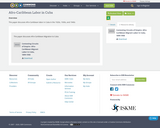
This paper discusses Afro-Caribbean labor in Cuba in the 1920s, 1930s, and 1940s

This paper discusses Afro-Caribbean labor in Cuba in the 1920s, 1930s, and 1940s
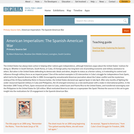
This collection uses primary sources to explore the Spanish-American War. Digital Public Library of America Primary Source Sets are designed to help students develop their critical thinking skills and draw diverse material from libraries, archives, and museums across the United States. Each set includes an overview, ten to fifteen primary sources, links to related resources, and a teaching guide. These sets were created and reviewed by the teachers on the DPLA's Education Advisory Committee.
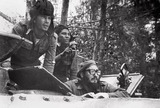
These primary source excerpts are broken into 2 groups: Cuban perspectives and American perspectives of the Bay of Pigs invasion. Consider having students work in pairs or small groups to read, discussion and answer the questions for their perspective. Then have students from both perspectives share observations. Consider using a guided question such as "Why are views so different for the same event, especially of those who fought at the Bay of Pigs?"
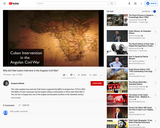
This video explains how and why Fidel Castro supported the MPLA in Angola from 1975 to 2002. The Battle of Cuito Cuanavale was the largest military confrontation in Africa after World War II. The civil war in Angola was one of the longest and bloodiest conflicts of the twentieth century.

This is the second undergraduate design studio. It introduces a full range of architectural ideas and issues through drawing exercises, analyses of precedents, and explored design methods. Students will develop design skills by conceptualizing and representing architectural ideas and making aesthetic judgments about building design. Discussions regarding architecture’s role in mediating culture, nature and technology will help develop the students’ architectural vocabulary.

This architectural studio will have one main project for the semester: to explore the issues surrounding the redesign of an area in Havana, Cuba. It is a typical area about the size of a Law of Indies block that presently has a mix of housing, work, and shopping, in buildings that need to be replaced and others that need to be rehabilitated. There is also vacant land, and buildings that are unused. Part of the blocks front on the Malecon, the street next to the water. The other edge fronts onto a typical neighborhood. The intention is to study the culture through an understanding of one area of Havana and then design an “echo” in architectural form. The design will include public space as well as a mix of buildings: some new, some rehabilitated.

This digital archive is an aid in understanding how British, Canadian and especially U.S. nationals managed and, on occasion, challenged informal empire in 1940s and 1950s Cuba. Cuba’s Anglo-American Colony in Times of Revolution documents how, in the context of revolution, contact between Cubans and U.S. nationals–as well as a smaller number of British and Canadian residents–reproduced existing hierarchies, while simultaneously creating new empathies. Cuba’s Anglo-American residents managed informal empire by developing and cultivating economic, political and cultural authority on the island. These privileged outsiders were able to exert dominance through socioeconomic partnerships with Cuban powerbrokers. However, Anglo-American educators, journalists, missionaries, politicians, executives, mobsters and philanthropists crafted a diverse, and often contradictory set of alliances with Cubans. In the context of revolution, where their Cuban colleagues, classmates, students, parishioners, friends and family risked their lives and their privilege for a “new” Cuba, a significant segment of Anglo-American residents entered into cross-cultural solidarities with revolutionary actors. Based on the personal commitments they developed with Cubans, many U.S., British and Canadian nationals residing in Cuba struggled for a socioeconomic and political transformation of Cuban society, both before the revolution ousted the Batista government and after the revolutionary government had consolidated power. This archive centers a new set of actors, institutions, and relationships in the narrative of the Cuban Revolution.
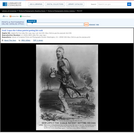
A satiric portrait of Venezuelan-born general Narciso Lopez, leader of an 1850 expedition to liberate Cuba from Spanish rule. Lopez's army of American volunteers captured the Cuban coastal town of Cardenas in May 1850. After a brief occupation Lopez's forces were driven out by Spanish troops, and fled to Key West. Lopez is shown fleeing to the left, holding a sword and a bag marked $50,000 (an exaggerated reference to the small sum of money taken by his men from the Cardenas customhouse). A milestone points "To Cardenas Custom House" in the distance, where a battle rages. Lopez says: "Well! we have not Revolutionized Cuba, but then we have Got what we came for, my Comrades came for Glory, I came for Cash, I've got the Cash, they've got the Glory, & I suppose we're all satisifed. I'm O-P-H [?] for the United States again. Cant Live under a Military Despotism." Weitenkampf dates the print tentatively 1851, the year of Lopez's second Cuban expedition. Specific reference here to the Cardenas affair of the preceding year, however, is persuasive evidence for an 1850 date.|Pubd. & for sale by John L. Magee 34 Mott St. N.Y.|Title appears as it is written on the item.|Weitenkampf, p. 103.|Forms part of: American cartoon print filing series (Library of Congress)|Published in: American political prints, 1766-1876 / Bernard F. Reilly. Boston : G.K. Hall, 1991, entry 1850-10.

This kit provides the materials and background information needed to engage students in a dynamic and constructive process of learning how global media perspectives differ based on country of production, media source, target audience, and political and social context. There are five lessons representing important issues and media documents from: Africa (news and documentary film clips about the food crisis), Latin America (editorial cartoons about immigration), Europe (news and documentary film clips about Islam and cultural identity), India (magazine covers about India's rise in the global economy), and Southeast Asia (websites concerning Islamic majorities and minorities).

This class is a selective survey of Latin American history from the beginning of the twentieth century to the present. Issues studied include Latin America in the global economy, relations between Latin America and the U.S., dictatorships and democracies in the twentieth century, African and Indigenous cultures, feminism and gender, cultural politics, revolution in Mexico, Cuba, and Central America, and Latin American identity.

This site features films and actualities taped in the U.S., Cuba, and Philippines showing troops, ships, notable figures, and parades, as well as reenactments of battles and other wartime events. These films mark the first U.S. war in which the motion picture camera played a role.

Drawn from Wheelan's 2019 work published by Norton, this reading provides a brief and engaging introduction to economics for high school students and beyond.See bottom half of document for Spanish version.